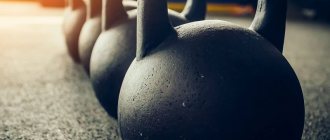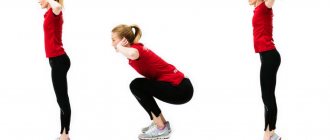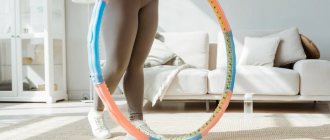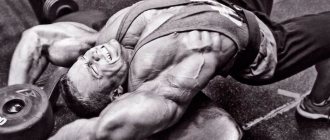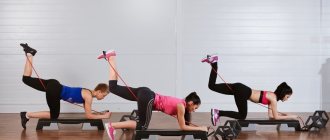Advanced athletes are distrustful of jogging at home, considering it more of an indulgence than a serious means of improving health and getting rid of extra pounds. They argue that there is no high intensity, no scale that can be achieved on the street. As you know, to each his own, and it’s actually wonderful that running on the spot for weight loss exists as a worthy alternative to expensive gym memberships. It’s great that it gives an opportunity to young mothers, students with limited free time, and especially women who are simply embarrassed to run out into the park for everyone to see, to join a healthy lifestyle.
When there is no suitable place for street jogging or it takes longer to get to it, you should not give up active movement. It is better to arrange home errands, supplementing them with exercises aimed at reducing weight.
What are the benefits of running in place?
Like any cardio exercise, running in place trains the cardiovascular system. Aerobic exercise will trigger the same processes as regular running. And in this sense, running in place is not inferior to running on the street in any way.
Running in place is a solution for those who do not want or cannot go outside; for runners recovering from injury or a long break from training; for beginner athletes.
The technique of running in place is easy to learn and is the same for any runner. It does not require simulators or complex equipment - only a minimum of space and free time.
Benefits of running in place:
- If you ventilate the room before the start of class, the body is saturated with oxygen. Pressure increases, energy consumption processes start, muscles warm up, capillaries expand and work better.
- The immune and nervous systems are strengthened, muscles are strengthened, and posture improves.
- The impact and total load is significantly less than with street running, so running in place can be chosen by those who are interested in gentle training.
- The weather won't ruin your training plans; doesn't need a lot of space; no need for fancy street running gear.
How much and how often should you run?
To achieve the maximum effect from training, you need to exercise regularly. The first results will be noticeable after 1 month of training, and if you follow proper nutrition and perform additional exercises - after 2 weeks. The first workout should not exceed 5 minutes.
As you get used to the loads, the running time should be increased by 1-2 minutes. every 3 days. The duration of running in place depends on the person’s well-being and the presence of concomitant diseases. It can vary from 30 to 60 minutes. On average, if a person weighs 60-70 kg, in 1 month of training you can lose about 3-5 kg.
Overall, running in place is a worthy alternative to classic running. It is suitable for people who do not have a lot of free time or the opportunity to visit a fitness center. It is worth remembering that training at home does not allow you to work out all muscle groups and quickly lose weight, so they need to be supplemented with other activities.
Author: Shalunova Anna
Article design: Anna Vinnitskaya
What muscles work when running in place?
The same muscles work as during normal running - the muscles of the legs and core.
- The thigh muscles are on the back of the legs. These muscles are responsible for bending the knee.
- Quadriceps. They are located on the front side of the thigh, are activated when the leg is extended, and play a large role in the correct movement of the hip and knee joints.
- Gluteal muscles. It is thanks to them that the body is in an upright position.
- Calf muscles. Stabilizing muscles are responsible for balance and lifting the leg while running.
- Iliacus muscles. This is an internal group of pelvic muscles; they regulate the flexion of the lower leg.
- Intercostal muscles. They work when you inhale and exhale.
- Abdominal muscles. They turn on when you lift your leg as it moves forward.
Disadvantages of running in place
- Still, the load is lower compared to street running. No change in terrain, no opportunity to accelerate, no oncoming air resistance.
- Monotonously. Escape with music, a movie, a podcast, an audiobook.
- Does not provide weekly running volumes - only heart training.
- If the technique is incorrect, running in place can cause harm.
source: verywellfit.com
Technique of running in place
If you look into it, running in place can be a great way to hone your running technique in general. A number of rules will protect the runner from injuries both when running on the spot and in the future when running on the street.
- The back must be kept straight and level; bend your arms at the elbows, without lifting or relaxing them too much; the shoulders do not tense; arms move along the body back and forth at waist level.
- The legs must be moved one by one in place, avoiding overlap. The foot lands in the middle, even closer to the toe, exactly under the center of gravity. That is, the runner remains exactly in the same place where he started the workout, without moving forward or bouncing.
- For the first training, you can use a wall - rest your hands on it and move your feet. Such a life hack physically will not allow you to move forward.
- Don’t lower your head, don’t look at your feet – your gaze is directed in front of you.
- Breathing when running in place should be even and calm. The advantage of running in place is that due to the relatively low load, breathing is not interrupted. You can follow a 3-3 rhythm: inhale for three steps, exhale for the next three steps.
- Don't forget to do a general joint warm-up before training and stretching after it.
Restrictions
Along with the positive properties, this type of activity has a downside that people with:
- hypertension during exacerbation;
- bronchial asthma;
- injuries to joints and spine;
- significant excess weight. A guideline can be the body mass index (BMI - the ratio of weight to the square of height). If its score is more than 35, there is a high probability of knee injury due to increased load during jogging;
- high degree of varicose veins;
- pregnancy.
Anyone who has at least one of the factors listed should consult with their doctor before starting a training course to obtain his permission, so that losing extra pounds does not result in harm to health.
Moreover, if there are medical restrictions, you can always find an effective alternative way to lose weight that is right for you.
Running clothes and shoes in place
It's simple - running sneakers, a T-shirt or T-shirt (men can do without them at all, women can wear a supportive sports bra), shorts, bike shorts or leggings. Train in something that is comfortable and not too hot in the room.
And you can choose sneakers without strong cushioning. It is not needed and will eliminate the temptation to land on your heel. Shoes should fit firmly on the foot, not squeeze or dangle. It’s the same with clothes – you can’t let them rub and interfere with your movements.
marathon and half marathon training plans and start training today!
It is useful to place a regular training mat under your feet. It (along with sneakers) absorbs impacts of the foot on the floor and prevents the feet from slipping. But the mat itself needs to be non-slip.
Recommendations for implementation
By following the simplest tips for performing the exercise, you will optimize your training process and achieve maximum results in a minimum period of time.
Let's talk about them in more detail:
- Clothes and shoes
You can use any sportswear that is comfortable for you (adjusted for the time of year and the air temperature in the room).
For men, this could be a T-shirt or cotton tank top and shorts. For women - a top or T-shirt and sports leggings or shorts.
The most suitable shoes are running shoes.
Although the selection requirements here are not as stringent as when performing the exercise on the street.
- Pre-warm-up
The benefits of running in place are obvious, but if you don’t warm up before, you can harm yourself.
Before you start, do a light warm-up of your joints and muscles to smoothly prepare your body for the upcoming load.
The simplest and most logical option is walking in place (for 3-4 minutes). In this case, you can additionally use your arms, doing circular rotations and swings. Bends of the body forward, to the right, to the left and similar movements are also suitable.
- Vary your movement
Running in place to lose weight for a long time is a rather boring activity.
To increase interest and add more emotion to cardio training, you can and even need to use elements from other physical exercises.
For example, running in place for some time with the shin wrapped back or with high knees
You can combine it with various types of jumps. For example, on a jump rope (jumping for 30-60 seconds, then running in place for 30-60 seconds, then the cycle is repeated).
In addition to variety, this will also increase the overall energy expenditure of the body.
- How to reduce noise
Quite a pressing problem, especially for people living in an apartment building.
To minimize noise effects, wear sneakers. They soften the force of the foot hitting the floor. You can place a rubber fitness mat under your feet.
Is it possible to lose weight by running in place?
Can. You need to maintain a balance between calorie intake and expenditure: this is how you can lose a couple of kilograms within a few weeks of regular running in place.
In order to achieve your goal faster, monitor your pulse - it should be low, then the same processes will occur in the body as with any aerobic exercise: the body uses up glycogen, the processes of aerobic glycolysis are launched, in which fat becomes the source of energy.
Heart and lung training and weight loss goals revolve around one heart rate indicator. This is approximately 60% of the maximum impact rate. Working out for 40 minutes at this heart rate will benefit your heart and help you lose weight over time.
Advantages and disadvantages
Running on the spot at home for weight loss has its advantages and disadvantages.
Among the advantages of this exercise:
- The ability to do cardio at home, without special sports equipment and regardless of weather conditions
- Strengthening and development of the cardiovascular and circulatory systems of the body
- Lung development
- Reduced impact load on the spine and joints of the lower extremities (ankle, knee and hip)
- Increased tone of the muscles of the legs and buttocks
- Strengthening the osseous-ligamentous apparatus of the lower extremities
- Energy-intensive exercise and assistance in fat utilization, which accelerates weight loss
- The technique of running in place is quite easy and does not require lengthy learning.
However, do not think that running in place is only one benefit.
This exercise also has a number of disadvantages:
- Lower energy consumption compared to the standard version. This means less efficiency in the process of losing weight.
- Monotonous exercise. Doing it for 40-60 minutes is an extremely boring activity, even for those who really want to lose weight.
- The movement is noisy enough to be carried out in an apartment and may disturb household members or neighbors
- There are a number of contraindications, including diseases of the joints and ligaments of the legs, serious diseases of the heart and blood vessels (varicose veins), diseases of the spine and late pregnancy
How many calories does running in place burn?
You can burn about 100 kcal in 20 minutes of work. Therefore, for a workout of 30-40 minutes, it is realistic to spend 300-400 kcal. And this is exactly how much you need to train if you want to train the cardiac and respiratory systems.
Calorie expenditure will increase the intensity of your workout. Add running with high knee lifts or shin wraps. It is better to alternate 20 seconds of exercise and 3 minutes of regular running in place. Again, you need to stay in one place and prevent the center of gravity from shifting. These two exercises have a positive effect on honing your running technique and add variety to your monotonous workout.
Read on topic: How many calories are burned when running?
How to burn your daily calorie intake
Home — For the public
- Map of medical organizations
- Vaccination
- Clinical examination
- Fluorography
- Addresses and opening hours of clinics
- Emergency rooms
- Oncology
- Where to take an HIV test
- Healthy child's office
- Services
- Prevention of CVD
- Disease Prevention
- World Patient Safety Day
- Newspaper "Medical News"
- specialist
- School of Health
— Disease prevention
- HIV infection
- All about vaccination
- All about proper nutrition
- Hepatitis
- Flu
- Dementia
- Schoolchildren's health
- STD
- Tick-borne encephalitis
- Whooping cough
- Measles
- Legionellosis
- Meningococcal infection
- Oncology
- Acute intestinal infection
- Pediculosis
- First aid
- Pneumococcal infection
- Pneumonia
- Prevention of rabies
- Dependency Prevention
- Rotavirus infection
- Diabetes
- Cardiovascular diseases
- Injuries
- Tuberculosis
- Tularemia
- Physical activity
- Obstructive pulmonary disease
- Exotic infections
- Ecology
- Why is swimming in ponds dangerous?
— Physical activity - a healthy future — How you can burn your daily calorie intake
In order to keep the body in good shape, you need to burn 150 kcal per day. How to understand how many calories we have already burned? How long does it take to burn exactly 150 calories? These questions arise immediately after reading the previous sentences. There are many recommendations and visual tables that indicate the type of physical activity and how much time is spent on each of them to burn a certain number of calories.
Often we can stumble upon types of physical activity that we can only encounter a couple of times a year, for example, swimming for 20 minutes (realistically, if we managed to swim at least once this summer or forced ourselves to sign up for a pool), quickly ride a bicycle (realistic if you use this type of transport every day and are late for work. In my case, this is generally unrealistic, since I don’t own two-wheeled vehicles at all) or climb a mountain (apparently, for climbers).
Here we have selected those types of physical activity that are more daily and everyday in nature.
To lose 150 kcal, you can:
- 60 minutes to wash windows or floors (for active housewives);
- 30 minutes walk (in general, for everyone who needs to get around at least to work or to the store);
- 15 minutes to climb the stairs (for those whose elevator is broken. The same option, only with the word “go down”, I think, is also being considered);
- Wash the car for 45-60 minutes (for car enthusiasts who are economical and who trust washing their “swallow” only to themselves);
- Weed the beds for 30-45 minutes (this, of course, is for all summer residents);
- Rake fallen leaves for 30 minutes (wait a little longer when autumn is in full swing);
- 15 minutes to remove snow with a shovel (after you have removed the leaves, wait a little longer).
If you are interested in physical activity related to sports, then you can:
- 30 minutes of Nordic walking;
- 45 minutes of playing volleyball;
- Ride a bike for 30 minutes (ride 8 km);
- 30 minutes of dancing (fast dancing);
- 20 minutes swim;
- play basketball for 20 minutes;
- 15 minutes run (1.5-2 km);
- 30 minutes of gymnastics in the water;
- Jump rope for 15 minutes.
Remember that to determine the most correct and beneficial load for you, you need to consult with a physical therapy doctor or a trainer in the gym.
Be healthy!
Text: Anastasia Koneva.
The article uses data from the State Research Center for Preventive Medicine of the Ministry of Health of the Russian Federation
How long to run
You need to arrange workouts lasting 30-40 minutes (or better, more) and repeat them 3 times a week. Results in losing weight with proper nutrition will be noticeable within a few weeks.
We do the same for training to develop endurance. The author of the book “From 800 meters to the marathon,” Jack Daniels, advises doing any cardio workout for at least 30 minutes to achieve results.
But it is important to increase the duration of your workout and do it gradually. There is no need to immediately start with a half-hour workout. If you absolutely want to run 40 minutes a day, break your workout into 20 minutes twice a day.
How to replace a treadmill at home
Not everyone can boast of a personal gym, so among craftsmen the idea arose of creating equipment with their own hands. The idea is not bad, but it is not at all suitable for people on limited means. At the same time, the problem of how to run at home without a treadmill can be solved in another way. Some lovers of an active lifestyle with a lack of free time prefer to train by dynamically moving from window to window of their own apartment or performing exercises that do not require any movement at all.
Monitoring your heart rate while running in place
The rules for tracking your heart rate for running in place are exactly the same as for any other type of running. Pulse remains the only indicator for monitoring the correctness of the chosen load.
Read on the topic: Pulse zones: what heart rate to run at
Determining heart rate zones begins with calculating your maximum heart rate. Calculated using the Roberges-Landwehr formula, based on the runner’s age: HRmax=205.8–(0.685*age). But the maximum heart rate may differ for athletes of different levels of training, and the most accurate results will be obtained by a treadmill test using special equipment.
Summary
Jogging in place is a great alternative for those who don't want or can't leave the house for a regular run. It allows you to stay in shape, additionally load your heart and muscles, and even lose a little weight.
It is important to follow the exercise technique so as not to harm yourself, and in the future, to hone your running movements. Running in place for 30-40 minutes 2-3 times a week will bring results, observing your heart rate zones. Do not forget to warm up and cool down and do not start training if there are contraindications.
Elena Matveeva
How to run correctly: execution technique
As before any workout, to avoid unwanted injuries, you need to do a warm-up with stretching elements.
Make rotational movements with your arms and legs, stretching to the sides. This will help you increase flexibility and stretch your muscles. At the same time, pay more attention to your legs, since further training will concern them.
If you have not exercised before, start your training with small jumps and bounces.
Do them for 5 minutes. Then you can start running. Note that at first it will be difficult, since the body is not yet accustomed to the stress. Then, as your training time increases, your endurance will increase, and here you can diversify your running with additional exercises.
If you want to lose a couple of kilograms, then add jumping rope and some other basic exercises to your running. Here is an example of a complex that you can use:
- warm-up;
- jogging;
- twisting;
- lunges;
- bar;
- run.
You should start any exercise smoothly, without sudden movements. Also remember that at the end of the entire workout you need to do exercises to restore breathing.
As with any other exercise, you must follow the technique:
- Your back and body should be straight. This way there will not be a large load on the spine.
- Lower and relax your shoulders, bend your arms at the elbow joints and press them to your body.
- When running, you need to push off and land on your toes, so you don’t injure your joints.
- Do not engage your heels under any circumstances.
- The higher your knees are, the more effective the session will be.
While performing, be relaxed, do not raise your shoulders. Otherwise, there will be a decrease in metabolic processes. It is recommended to run 4-5 times a week.

